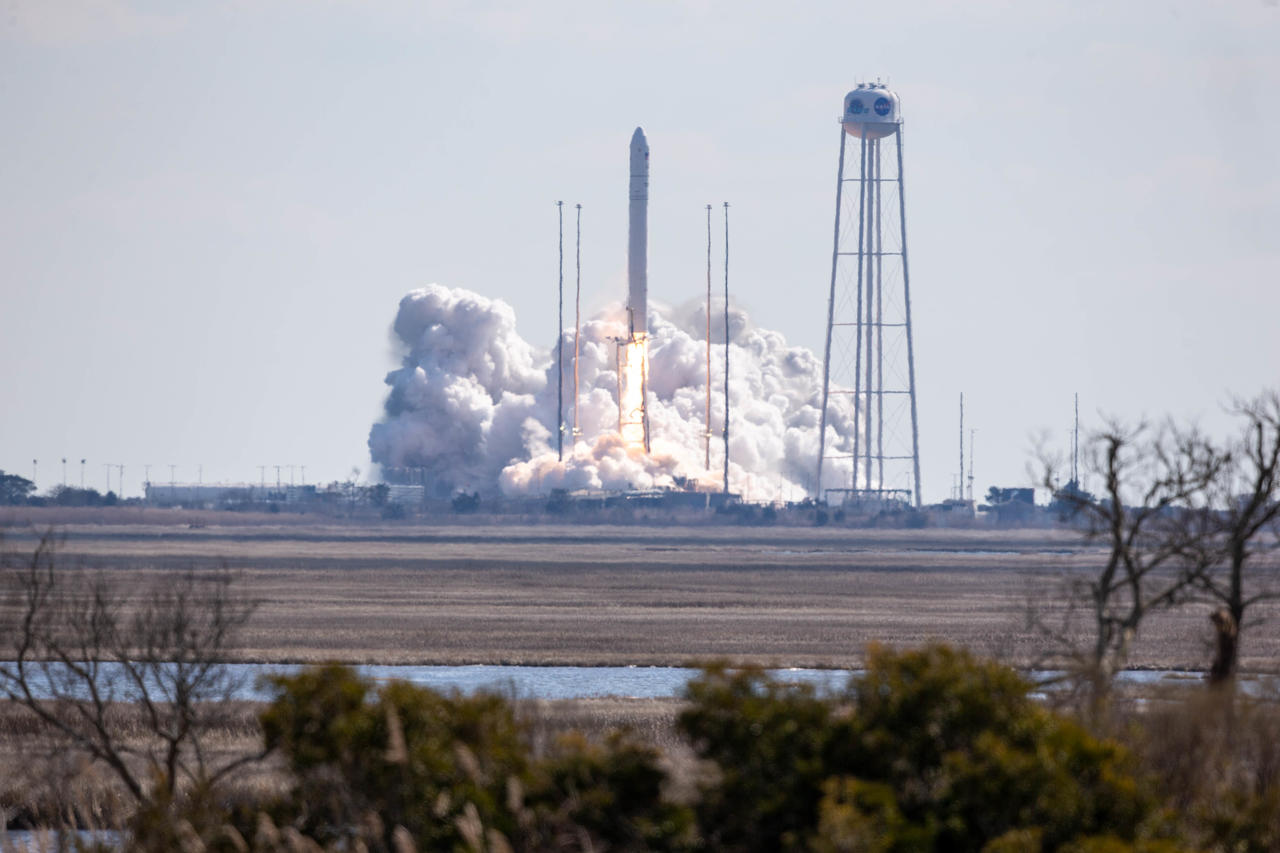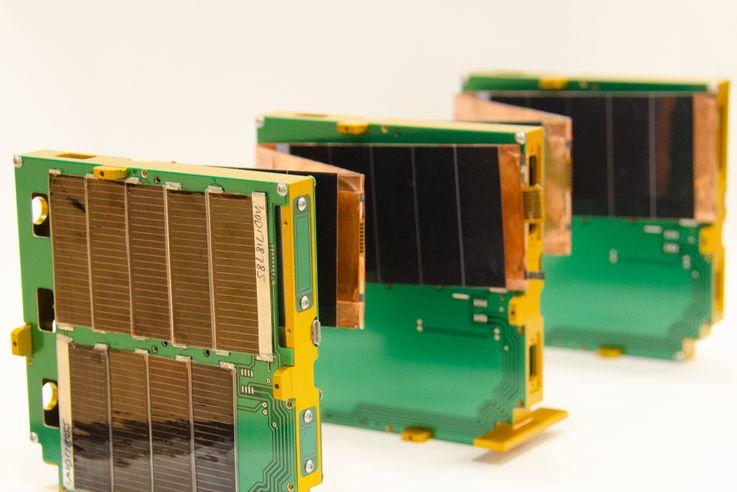A team of George Mason University students are among the brains behind a satellite that launched into space this weekend as part of a collaboration with Northrop Grumman and Virginia Space that includes being part of a resupply mission to the International Space Station.
The 14 Mason undergraduate students involved and project advisor Peter Pachowicz watched anxiously on Saturday, Feb. 20, as their ThinSat, a small satellite developed by students that is capable of executing two experiments in space and transmitting data from Extreme Low Earth Orbit (ELEO), took off for space from Wallops Island in Virginia aboard an Antares rocket in the NG-15 Resupply Mission.
The mission of the Mason ThinSat payload, called ASTERIA, was to test a battery box with different types of thermal shielding and compare the relative effectiveness of two power-handling architectures. It will mean experimenting with using different power generation methods on a ThinSat.
“This means the world to me and is the highlight of my academic career!” said computer engineering graduate student Jay Deorukhkar. “Being able to participate in Mason’s very first satellite launch is a privilege beyond my imagination. The vision of Dr. Pachowicz and the hard work of everyone on the ThinSat team over the last two years is the reason we are here today. The successful launch will set Mason on a trajectory to many more launches and to further develop the satellite program.”
The two-semester senior design project included seven Mason electrical and computer engineering students, three mechanical engineering students and four from systems engineering. Their efforts served as a rousing kickoff to Mason’s Engineering Week festivities.
Deorukhkar, who was still an undergraduate when the project began in Fall 2018, was among the Mason students involved who have been able to gain practical engineering experience by designing and developing their own satellite payloads. The single-use Mason satellite launched from the rocket at 200 miles into the sky during the second of three planned staged rocket separations and will remain there for its five-day orbit lifetime while collecting data.
The Volgenau School of Engineering hosted a virtual party leading into the 12:36 p.m. launch.
ASTERIA is among 30 ThinSats aboard that were developed by university and grade-level STEM students to be launched into ELEO. Virginia Tech, George Washington and American Universities are among the other schools whose students developed ThinSats.
“Northrop Grumman is proud to help advance STEM education through the ThinSat program,” said Kurt Eberly, Northrop Grumman’s director of space launch and launch vehicles. “This program allows George Mason, George Washington and American University students to gain valuable engineering experience by developing satellites that will collect data in extreme low earth orbit.”
Roughly the size of a slice of bread, ThinSats reduce the cost and size constraints of traditional satellites while still providing the opportunity to explore outer space.
But creating your own comes with its own specific challenges.
“It’s not just having an idea,” said Pachowicz, an associate professor of electrical and computer engineering, “but it has to be finished at a high level that is acceptable to Northrop Grumman and it has to be tested in conditions the rocket would see such as vibration, vacuum, and temperature. Space is always challenging for engineers because of the environment and the many systems that you have to integrate into one unit. And when it launches, you can’t touch it, so you have to be very detail-oriented.”
The Virginia Space ThinSat program is comprised of a partnership between Northrop Grumman, Virginia Space, NASA Wallops Flight Facility, Twiggs Space Lab and NearSpace Launch, as well as university and grade-level schools across the country.
Northrop Grumman and NASA send supplies to astronauts on the International Space Station using the company’s Cygnus spacecraft, which launches from the Antares rocket. Northrop Grumman has named the Cygnus spacecraft for this mission after NASA mathematician Katherine Johnson, the African-American woman whose hand-written calculations were critical to America’s success during our first human spaceflight missions.
The Mason satellite project was developed in Spring 2019 and completed through in-house testing and modifications by Spring 2020, but the wait for an appropriate mission for its launch had been delayed by the global pandemic.
“We’re just happy it’s going to be launched,” Pachowicz said, “and we’re already looking forward to doing it again and to develop our own small-scale satellite platform which can be shared with others.”


